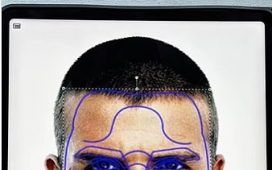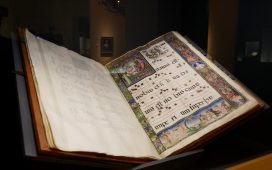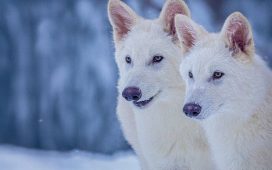It is the cloud that overshadows the search for alien life: for all the spacecraft sent to faraway worlds, researchers do not really know what to look for when it comes to evidence of life elsewhere.
Now, scientists are claiming progress with the puzzle after training a computer program to distinguish chemical mixtures made by living organisms from those created in more prosaic processes, such as reactions between sunlight and rocks.
In preliminary tests, the program was 90% accurate at telling the difference between samples taken from living organisms, such as shells, teeth and bones, and non-biological samples, such as laboratory chemicals and those found in carbon-rich meteorites.
Unless alien life wanders in front of a robotic lander’s camera, leaves an unambiguous fossil in a rock, or a smear of proteins on a distant world’s surface, such chemical “biosignatures” may be the best hope scientists have of finding past or present life.
Dr Robert Hazen, an astrobiologist at the Carnegie Institution for Science in Washington DC and a senior scientist on the project, said the tool had the potential to revolutionise the search for extraterrestrial life and deepen the understanding of the origins and chemistry of life on Earth.
Armed with the technique, the researchers hope to analyse materials from Mars for signs of life and bring clarity to raging debates over samples considered to be candidates for the earliest known life on Earth.
The researchers set out to build the signs-of-life detector after reasoning that life, unlike non-living material such as rocks, is built from molecules that are selected for their function. Based on that thinking, the molecular make-up of life past or present should differ from that of objects that have never been alive.
To explore the idea, the scientists ran 134 diverse samples from living and non-living objects through a process called pyrolysis-GC-MS. This provided a breakdown of the organic molecules in each sample. Using machine learning and mathematical modelling they then trained an algorithm to distinguish between samples of biological and non-biological origins. To the researchers’ surprise, the program identified three groups of samples: non-biological, life and fossilised life.
“There is something fundamentally different about the distributions of molecules in living versus non-living systems,” said Hazen. “The analytical method is so simple and so widely used in industry, forensics and science that we think the machine learning approach could prove immensely powerful.”
The scientists are now working with 25 leading palaeobiologists to see what the program makes of some of the oldest candidates for life on Earth. One is a 3.5bn-year-old slab of rock from Western Australia that some researchers believe contains some of the oldest fossilised microbes on the planet.
With further training, the tool may learn to distinguish different types of life, such as photosynthetic life from other organisms, the scientists say. Details are published in Proceedings of the National Academy of Science.
The researchers hope to expand their tests to Mars samples already collected by Nasa’s Curiosity rover. Whether the program can spot signs of any kind of life, or merely life as we know it, is unknown.
Hazen suspects all life may use molecules differently to non-living objects and so reveal itself under analysis, regardless of its biology. “We may be able to find a lifeform from another planet, another biosphere, even if it is very different from the life we know on Earth,” he said.










